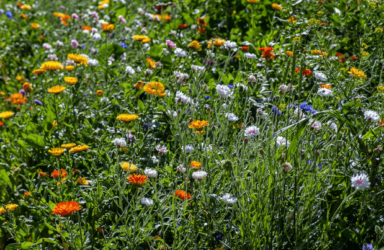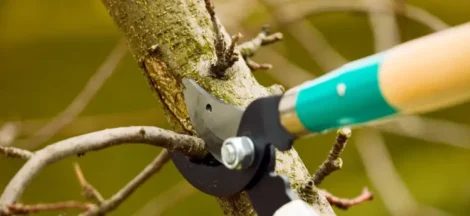Summer is an amazing season to cultivate your garden. The sun shines high and bright, providing the energy needed for summer vegetables and flowers to grow. However, it takes a bit of work to create a vibrant and thriving garden. Here are five steps to take if you want a bountiful summer garden.
1. Make Initial Inspections
A garden is not just a place where we grow crops and flora. It’s also a miniature habitat for insects, animals, and even other plant life. It’s best to make initial inspections before you start planting to make sure these other inhabitants will not cause problems for your summer garden.
Take a few paces around the area. Check out any burrows of nuisance animals like rabbits or rodents. Snakes may sometimes loiter around, so be careful. If you find a garden snake or two, you may choose to live with them as they help deal with unwanted wildlife and are not dangerous to humans. However, it’s still best to call in professionals, especially if you’re not snake savvy, to make sure the one you have is not harmful or venomous.
Moreover, check out invasive plants like weeds. They’ll compete with your plants for nutrients, so pluck them out down to the roots. You can also prevent or mitigate weed growth by using weed mats and mulch.
While you’re at it, look for dead leaves and foliage as well. Remove them before the rot or infection can spread to other plants.
2. Check and Prep the Soil
Lay the groundwork for your garden by making sure the soil is well enriched. A rich and loose texture is an indicator of good soil. To be certain, use a soil test kit to see if the planting beds and turf are fit to facilitate plant growth. If your soil contains too much sand and gravel, plant growth can be hindered. You might have to raise the bed to remedy this.
You should also add about two inches of compost to the beds. For fertilizers, it’s best to go organic. Eggs, fruit, and vegetable skins are practical options. Don’t overuse fertilizers though as these can cause water pollution, runoff, and restricted plant development.
Also, since summer gets hot, make sure that the soil is evenly moist. Dry soil is not good as garden plants need moisture to survive. You can use irrigation hoses to directly supply the soil with even and continuous water, facilitating moisture.
Lastly, constant and direct sunlight can damage the soil and your plants, so make sure to provide proper shading. Light-colored covers like cloths or mesh screens can do the trick.
3. Set up Plant Supports
If you plan to grow upright plants like delphiniums, sedums, or peonies, it’s best to set up plant supports early on. Install the trellises, rings, and stakes while the plants are still small. You’ll have a hard time doing this if the plants have already grown high, and you might even damage them.
Also, make sure that you firmly place the plant supports. They should be able to take on elements like wind and rain. It’s advisable that you paint wooden supports to increase their structural integrity and add to their aesthetic appeal.
4. Choose Your Plants
The bright summer mornings are great at highlighting plant vibrance, so choose an assortment of colorful flowers and vegetables.
Apart from being colorful and visually appealing, the vegetables and fruits you plant should also be nutritious and easy to grow. Carrots, tomatoes, cucumber, eggplants, and bell peppers are great options.
These plants vary in color and shape and will definitely pop up under summer light. They are also easy to cultivate and thrive during warmer weather. Moreover, they are nutritious kitchen staples, which makes them practical choices too.
Don’t forget to add some bedding plants too. A couple of marigolds, cornflowers, and begonias should be enough. These will fill in the empty spaces in your garden. However, do not overcrowd your beds as this can lead to stunted plant growth.
As for your showpieces, choose flowers that are both beautiful and pollinator magnets. Pollinated plants grow healthier and larger. Also, the traffic of bees and butterflies will add life to your garden. Most importantly, you’ll be contributing to environmental sustainability.
5. Harvest Frequently and Plant Evenly
Frequent harvesting allows your plants to keep growing and develop more yields. Vegetables like zucchini and cucumber should be plucked out while still small. If you wait too long, their insides will be filled with too many seeds. In contrast, fruits like tomatoes should be harvested as soon as they become ripe.
After harvesting, make sure that you sow new plants evenly. A concentration of plants in one area would cause competition and result in weak and small produce.
You should also consider the period of maturity. Generally, if the maturity is slow, a bigger space is needed. For instance, tomatoes grow slowly and need a wider area. Meanwhile, lettuce and beans mature relatively fast and can be closer in proximity to each other.
Whatever the case, it’s best to follow the spacing instructions provided in seed packets to ensure that there’s adequate spacing for each of your plants.
Final Thoughts
From making preparatory inspections to ensuring proper plant spacing, there are many things to account for when planning a summer garden. You don’t need a green thumb to succeed. Just follow the correct steps, and you’ll get blooming results.




 How can NRIs use Property Management Services?
How can NRIs use Property Management Services?